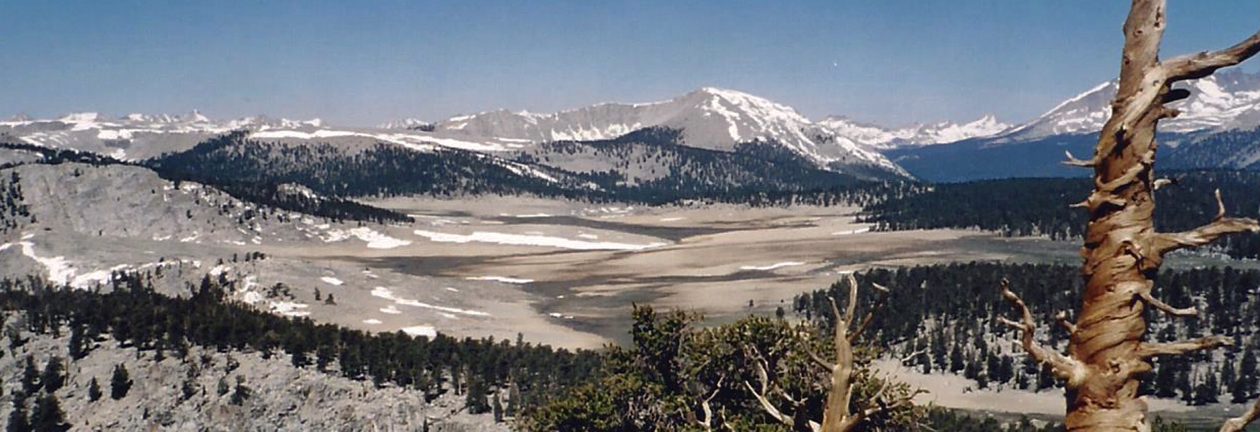Hong Kong, China
I woke up later than I wanted to today, but quickly showered and dressed before heading out to the Hong Kong Museum of History. The museum was very comprehensive and took visitors through several rooms with dioramas setup detailing the entire history of Hong Kong from when the Earth was first formed until present day; there were many geological samples displayed as evidence to support the known history of how Hong Kong formed, when it was a very active volcanic area, when it was covered by a shallow sea, when it was a desert, when the shore stretched 160 kilometers into the Pacific Ocean during the last Ice Age, and how it is now. There were exhibits on: the four ecosystems found naturally in Hong Kong; human settlement with all the related artifacts from paleolithic times to neolithic times to the Bronze Age to the different Chinese Dynasties that conquered Hong Kong; the different folk cultures that make up Hong Kong; the two Opium Wars which led to the British Occupation of Hong Kong Island, Lantau Island, Kowloon Peninsula, and the New Territories; early growth of Hong Kong during British rule with building facades and shops setup to walk through; the Japanese Occupation; Hong Kong as a modern metropolis during the second half of the 20th century and the return of Hong Kong to China in 1997. It was a very well structured museum designed to immerse visitors into the history displayed.
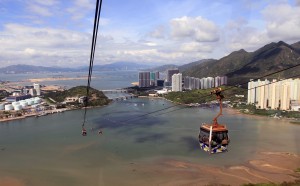
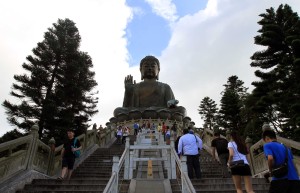
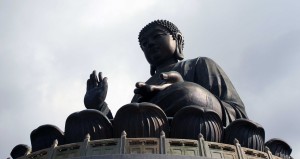
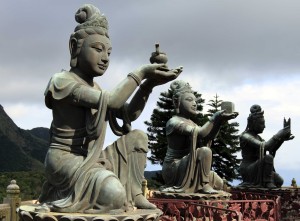
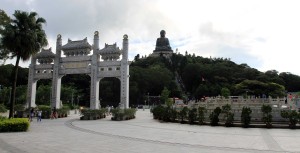
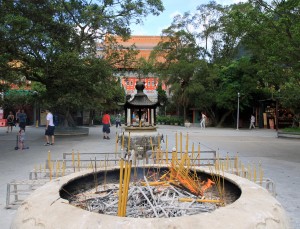
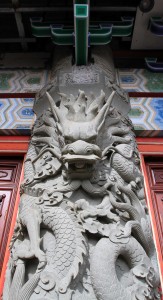
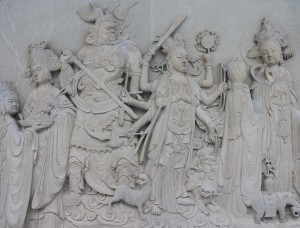
After spending almost three hours there, I went to the nearest subway station and traveled to Lantau Island, not to visit Disneyland, but instead the Po Lin Monastery and Lantau Peak. I got off at the end of the line at Tung Chung Station and then rode the cable car up to Ngong Ping Village. From there I pilgrimaged to the giant Buddha Statue, then I walked across another circular mound altar just like the one at the Temple of Heaven in Beijing (three tiers with center stone to pray on at the top) but smaller, and then I visited Po Lin Monastery. Unfortunately, the majority of the Monastery is being renovated, so other than the entrance building and the first hall, there was not much else to see. I then walked to the “Wisdom Path”, crossing through forests with derelict buildings and a shanty town locals dwell in. The “Wisdom Path” was recently constructed in 2002 and has many large columns along it’s route with calligraphy of the ‘Heart Sutra’ displayed on the columns. The ‘Heart Sutra’ is the best known Mahayana sutra and also the shortest at 260 words (it figures the shortest would be the most well known); the sutra articulates the doctrine of ’emptiness’ and teaches that since everything is dependently arisen, there is no such thing as an eternally abiding entity; it also teaches that when one acquires the wisdom of ’emptiness’, they will realize that all physical and mental events are in a constant process of change, and accordingly everything can be changed by modifying the conditions; also, understanding the relativity of all standpoints will prevent one from becoming irrationally attached to things and will therefore become free from all mental obstructions and obtain perfect harmony and bliss.
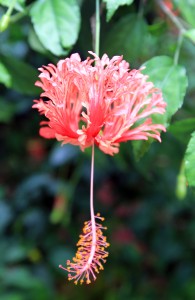
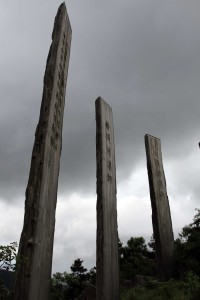
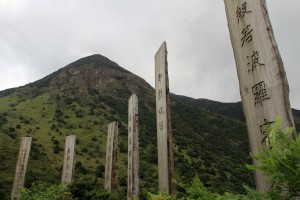
Just as I was admiring the columns with the view of Lantau Peak in the near distance, it began to rain due to a storm that had moved ashore. I quickly headed back to the village; once there, I waited for the down pour to cease, before swiftly walking back to the cable car, which I then took back down to the subway station. From the station I took the subway metro to Central Station on Hong Kong Island. I exited the station through ifc Mall and on the pedestrian overpass that connects the mall and all other nearby major buildings and locations there were many locals (almost all of them were women) playing cards, eating, and conversing on cardboard boxes that had been flattened to provide a floor and, in some cases, a short wall. After leaving the pedestrian walkway, I traveled on the sidewalk and noticed some streets blocked off where there were more locals doing the same on the middle of the blocked off streets – there were also some dancers practicing their moves. Perhaps this is what people do in Hong Kong on Sundays?
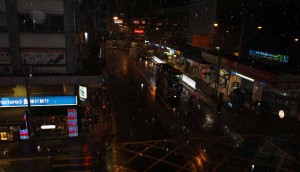
From the Central area, I walked to Lan Kwai Fong (a street full of bars and restaurants); along the way I passed a stone staircase with four gas lamps perched on the corners (all that remains since the city converted to electricity); I then reached the street, but it looked rather empty (maybe it comes alive later in the night), so I walked west to SoHo (south of Hollywood Road), which had many pubs and restaurants filled with international patrons, though most looked and sounded British. The streets in SoHo even have the crooked white lines one finds in London. Also, I didn’t type it before, but in Hong Kong, everyone drives on the wrong side of the road just like in Great Britain, and unlike in mainland China. Another thing I noticed yesterday and today is that unlike mainland China, the Special Administrative Region of Hong Kong does not have any bicycles or mopeds parked on the sidewalk or being driven on the sidewalk and crosswalks, which makes Hong Kong a much more pedestrian friendly city than any other city I encountered in China.
I finally found a Chinese restaurant to eat at in SoHo (the British pubs were tempting, but I wanted to eat Chinese today because I feel like I’ve been neglecting the local cuisine in favor of Western food; however, it should be noted, it is absurd for a single person to eat at a Chinese Restaurant; a number of varied dishes should be ordered and shared by a group of people – this is how everyone else does it); I sat down and had sliced lotus root in a spicy sauce, bamboo steamed pork dumplings, crispy chicken in a sweet and sour sauce with many dried red peppers, and chrysanthemum tea. After that delicious experience, I left the restaurant, walked around SoHo for a while, but it began to rain, so I took the subway back to the station near the hostel. I then bought some beer at the nearby Seven-Eleven (not the one with all the prostitutes from Africa hanging around outside – they were there last night as well) and went back up to the hostel to plan tomorrow’s excursion.
